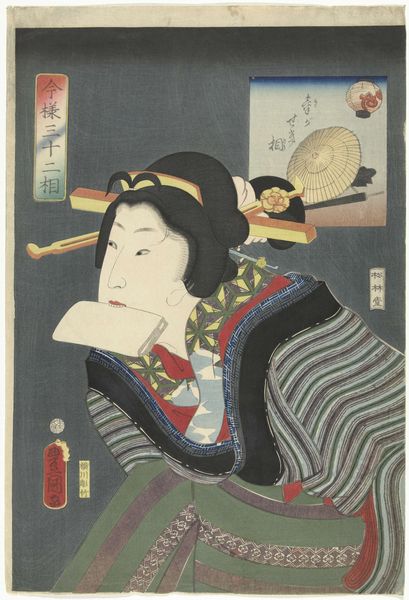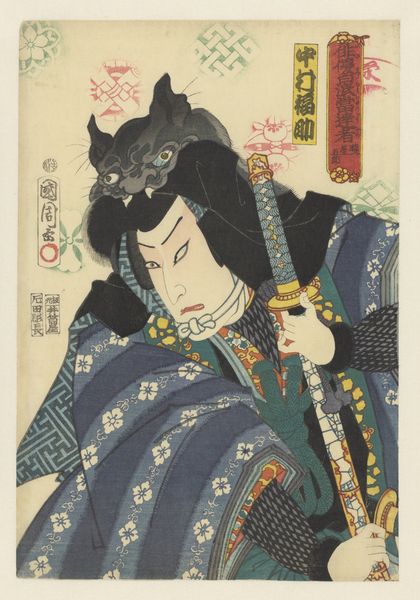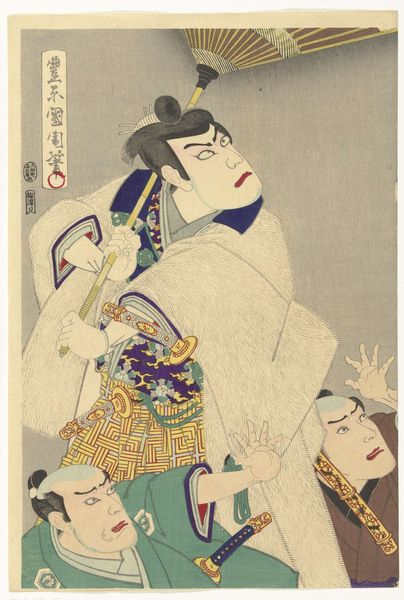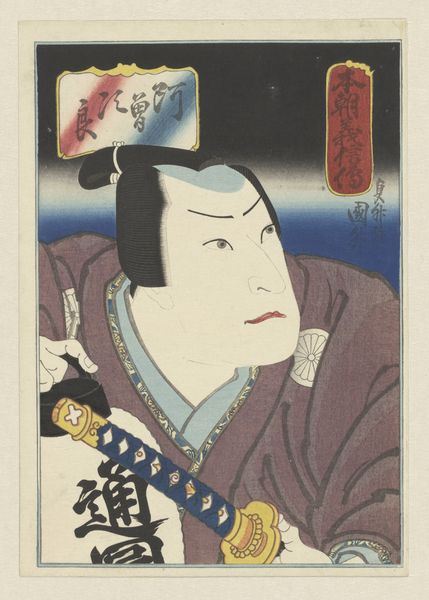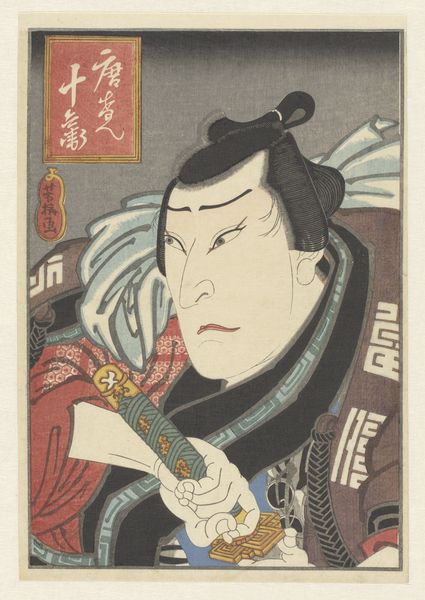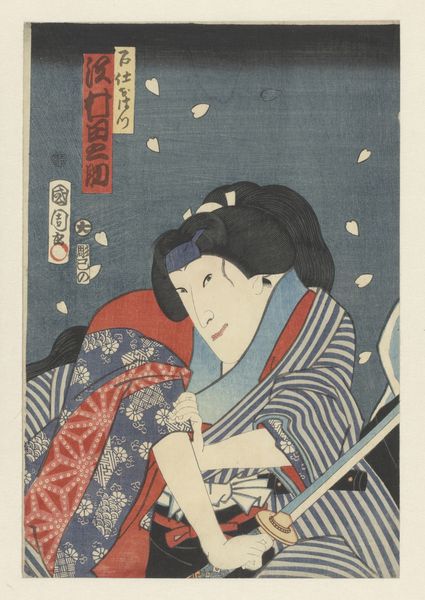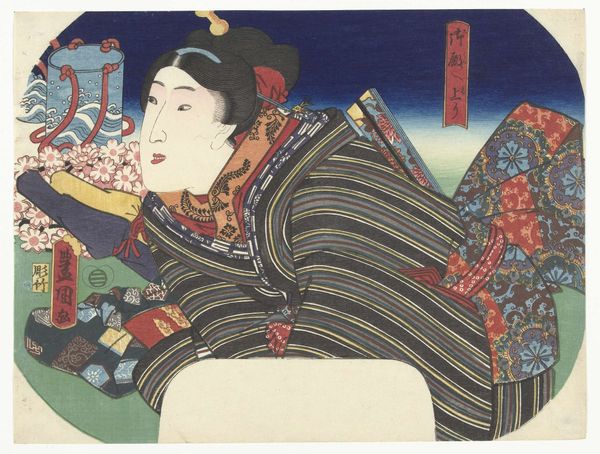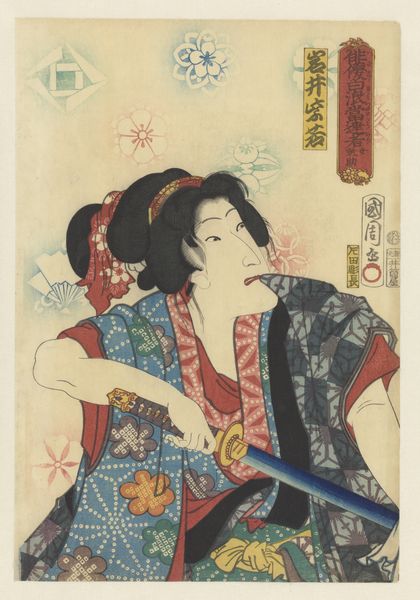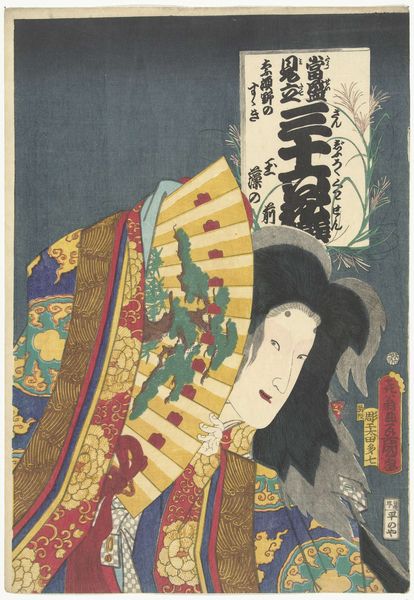
print, ink
#
portrait
# print
#
asian-art
#
ukiyo-e
#
folk art
#
ink
Dimensions: 14 3/8 × 9 5/8 in. (36.5 × 24.5 cm) (image, sheet, vertical ōban)
Copyright: Public Domain
Editor: Here we have Utagawa Kunisada's 1851 woodblock print, "Portrait of Taira no Tomoori." I'm immediately struck by the somber mood and the weightiness of the box he's carrying. What story does it tell? How do you interpret this work, considering its historical context? Curator: This portrait allows us to explore the complex intersection of historical memory and cultural identity. Kunisada presents Taira no Tomoori, a tragic figure from the Genpei War, not just as a warrior but as a symbol of loss and the cyclical nature of power. The box you mention could be interpreted as holding the weight of his clan's defeat, or perhaps the burdens of the past in general. How does that reading resonate with you? Editor: It adds a layer of melancholy, understanding the box as a representation of loss. I hadn't considered the cyclical nature of power. Does the ukiyo-e style itself contribute to this understanding? Curator: Absolutely. Ukiyo-e, often associated with fleeting beauty and the "floating world," is here used to immortalize a figure associated with defeat and honor, prompting reflection on the transient nature of both victory and defeat. This echoes broader social anxieties about the shifting political landscape during Kunisada's time, doesn't it? Editor: Definitely. So it's not just a portrait of a historical figure but a commentary on power, loss, and identity reflected through a contemporary lens. Curator: Precisely. It’s about using the past to understand the present, a commentary that transcends time. What do you make of the costuming? The patterned kimono versus what might be plain underclothing visible? Editor: It makes the figure complex: it doesn't look typically what I imagine to be warrior garb but at the same time creates tension from the use of what look like standard elements, prompting a new level of enquiry to truly understand its implications. Curator: Precisely! Art helps us think about the past in order to navigate present times. It sounds like we’re both taking away food for thought.
Comments
No comments
Be the first to comment and join the conversation on the ultimate creative platform.
